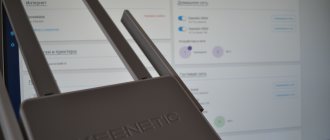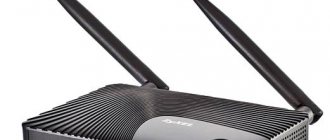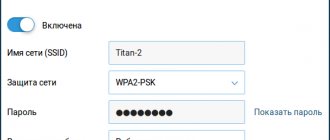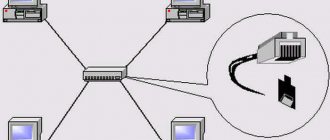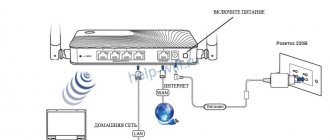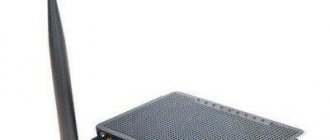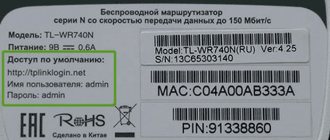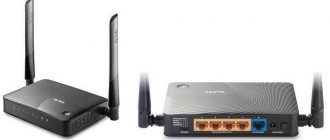Do you want to connect and configure the Keenetic router yourself? In this detailed tutorial I will show you how to do this. I’ll tell you about all the nuances, add photos and necessary screenshots. I will demonstrate the setup process using the example of the Keenetic Viva Internet center, which was purchased specifically for writing this and several other instructions, which I will post in a separate section on this site. First, let's connect, then set up an Internet connection using an Ethernet cable, set up Wi-Fi and set a password.
These instructions are suitable for almost all new Keenetic routers that have the KeeneticOS operating system with a new web interface installed. For the following models: Keenetic Giga (KN-1010), Ultra (KN-1810), Speedster (KN-3010), Air (KN-1611), Start KN-1111, Lite KN-1311, City (KN-1511), Omni (KN-1410), DSL (KN-2010), Duo (KN-2110), Extra (KN-1710, KN-1711), 4G (KN-1210), Hero 4G (KN-2310), Runner 4G ( KN-2210). Well, for Keenetic Viva (KN-1910), on the example of which I will write this article.
To get started, I recommend finding out the following information:
- What type of connection does your ISP use: Dynamic IP (DHCP), Static IP, PPPoE, L2TP, PPTP.
- If the connection type is PPPoE, you must know the username and password. If L2TP or PPTP, then in addition to the username and password you must also have the server address.
- Does the Internet provider bind by MAC address?
As a rule, this information can be found in the Internet connection agreement, or from the support of your Internet provider.
Benefits of Keenetic
I've been a big fan of Keenetic routers lately.
I already wrote about them recently. Previously, there were Zyxel Keenetic routers, where the hardware was from the Taiwanese company Zyxel, and the firmware from our programmers was from Keenetic. Those routers were black. Now Keenetic routers are white - this is completely our product. There are a lot of models, even, it seems to me, too many. They should reduce the assortment for a more convenient choice. At several sites, including my home, I have, as it happens, installed routers of two models: City and Giga. Giga, as practice has shown, being conveniently located approximately in the center of the apartment, provides Wi-Fi over an area of up to 140 square meters. City is enough for a 3-room apartment.
Cool things I like are:
- The same firmware for the entire model range. There are many devices with different characteristics, but the firmware is the same everywhere. That is, the same interface is everywhere (very convenient) and the same functions.
- Lots of functions. Everything you can think of is there. And on all devices. For example, if there is a USB port, then you can insert a modem, or a DECT module, or a flash drive or USB hard drive there, onto which you can download torrents or use it as a network drive. Very convenient connection management; you can set rules for connecting and using the Internet for everyone.
- Convenient firmware update. Without searching for the firmware file on the Internet and not understanding what exactly is being updated.
- Parental controls with tons of features.
- Possibility of creating a seamless Wi-Fi network.
- The coolest thing is the cloud service for accessing the web interface of devices on the local network through the keendns cloud service. I can log into any devices on the network without having a static IP address, and also access the router’s full web interface to configure any functions.
- My Keenetic application, which allows you to manage your router.
The last two points are the most useful for remotely servicing a router or a large number of routers (like mine). Some time ago I was able to remotely set up video surveillance from an IP camera and recorder via a Keenetic router with keendns configured. In the web interface of the router, I changed its IP address to match the subnet number with the default subnet number of the camera and recorder, went into the interface of the camera and recorder and configured them to work together. Very comfortably.
If a client has a Keenetic router, and he gave me access to it, then I can control the availability of Internet on the router, change Wi-Fi network parameters, measure speed, see whether certain devices are online, reboot the router, change Internet connection parameters, deny access to some devices.
The My.Keenetic application allows you to connect to the management of the router by scanning the QR code printed on it or by being connected to its wi-fi network. It had two big disadvantages: firstly, there is no way to save the application settings with data about connected routers; they are lost when the phone is replaced. Secondly, it was not possible to configure keendns in the router from the application for remote access to the web interface.
Connection via Telnet
To use Telnet, you must first make certain changes to the settings of the PC where it will run. To get started, on Windows 10, 8, 7, and Vista, enable the Telnet client in Windows Features in Control Panel before running any telnet commands.
Further:
- Open Control Panel by searching for Control Panel in the Start menu, or open the Run dialog box using WIN + R and typing control.
- Select Programs and Features in the Windows 10 Control Panel.
- In the left pane, select Turn Windows features on or off.
- Check the box next to Telnet Client.
- Select OK to enable Telnet.
New Keenetic application
Now both problems have been radically solved by the appearance of a new application, which is simply called Keenetic. It's cloud-based, which means I register by entering my username and password, and now all the routers added to the application are saved in my account.
The new application works, like the keendns service, like seamless wi-fi, only with firmware that is installed only on Keenetic routers, not on Zyxel Keenetic. So black Zyxel routers no longer receive these benefits. But the routers are still great, and can work through the old My.Keenetic application.
There is an account web interface on the keenetic website, which displays all my account data. It does not allow you to directly manage routers, but it allows you to create a keendns entry to gain access to the web interface of the router and, therefore, all devices on the network.
Configuring a Zyxel router from a tablet/smartphone using the web interface.
This method is no different from setting up a router from a computer; you also connect to the Zyxel wireless network (the network name and password are indicated on the router sticker).
Open any browser on your mobile device (Crome, Opera, Mazzila, etc.), enter the IP address of the router 192.168.1.1 in the address bar and continue, just like you do on a computer. The only disadvantage of this method is inconvenience. The web interface is designed for a mouse cursor and keyboard; on a tablet, all menus are small and not convenient to use with a finger.
Cloud access security
Regarding safety. Keenetic has access to my routers; nothing prevents it from processing data about devices on networks. So in exchange for ease of management and administration, I sacrifice a little security, as with any cloud access to anything.
The web interfaces of my devices are password protected in any case. Anyone can log into the web interface through keendns and see the login and password entry page. So put passwords of normal complexity on routers, DVRs, IP cameras, file servers, etc. If there is a danger of data leakage, change your password. Change the password on the router - then access through the Keenetic and My.Keenetic applications will no longer work. It is also advisable to change the login from the standard admin to something else; if it is still possible to choose a password, then a login-password pair is definitely unrealistic.
In Keenetic routers, you can disable and completely remove firmware components. This applies to cloud access, new cloud access (individual components) and keendns. To sleep more peacefully, you can completely remove remote access components from the firmware. And for complete peace of mind, take a router with open firmware and administer it yourself.
127, total, today
Related posts:
- Seamless Wi-Fi Internet for an apartment and a country house Article updated in December 2022 What is important in Wi-Fi...
- Comparison of Smart Home systems: Larnitech, Wirenboard, Beckhoff, Z-Wave, EasyHomePLC By popular demand, I will write a short comparison of Smart Home systems, with…
- Z-Wave controller RaZberry and light and climate control I got my hands on another Z-Wave controller, which I...
- Seamless Wi-Fi in Keenetic routers I have always really liked Keenetic routers. Since then...
- TPLink Omada Seamless Wi-Fi System For a long time, I have been designing seamless Wi-Fi systems for…
- Convenient light control in a smart home Modern design trends tend to increase the number of light groups. Built-in lights…
- 8-port Wi-Fi router Keenetic Giant I have long been missing a router that would have 8...
Factory reset
If you have forgotten the password for the administrator’s “account” that you previously set when logging into the web platform, use the “Reset” button to return the Internet center to its original settings. On the back of the device, hold the key for 10 - 12 seconds.
To get to it (it is located a little deep in the gadget), use a sharp thin object, such as a match, pen or needle. The indicators will light up - the reset is complete. Log in to the web platform and configure the Internet Center again.
The "Reset" button must be held for 10 seconds to start restoring settings
How to connect
Before you start setting up the Keenetic Air KN 1611 router on your computer, you need to decide on its connection type. The classic method is via twisted pair cable. You need to check with your provider in advance about the connection technology, protocol, and maximum data transfer speed.
For the simplest connection you need:
- Insert the cable with the RJ-45 plug from the provider (or subscriber client) into the blue WAN port until it clicks;
- Insert the supplied cable with similar plugs into any LAN connector on the router and on the computer;
- Switch the switch on the case to mode “A” - router.
- Connect the power supply cord to the router and turn it on.
Next, you need to configure the device using a computer or mobile device.
Change Password
You need to open the “Management” section and go to the “Users and Access” tab. There you need to pay attention to “User Accounts” and click on the inscription admin.
A window will open to change your password and account settings. You must enter a new password and save the changes.
Briefly about the main thing
Initially, the Keenetic Air KN-1611 was positioned by the manufacturer as a universal device for creating stable Wi-Fi coverage at work or at home. Its “professional” purpose is also indicated by its strict utilitarian appearance: a gray rectangle with four antennas of regular geometric shape.
The kinetic's transceiver is dual-band with operating frequencies of 2.4 and 5 GHz. The model corresponds to class AC 1200 (Wi-Fi 802.11ac 5th generation with a throughput of 1200 Mbps). The antennas are divided into 2 receiving and 2 transmitting, a pair for each range with a gain of 5 dBi.
The router's cable interface is represented by one WAN and four LAN ports with a throughput of up to 100 Mbit/s (in practice, the routing speed does not exceed 95 Mbit/s). There is a two-position Mesh Wi-Fi switch on the case to activate the repeater mode.
The hardware of the device is represented by a 32-bit single-core MediaTek MT7628N processor and 128 MB DDR2 RAM. 32 MB of flash memory is available for the system and settings storage. Despite the modest equipment, it is quite enough to create an Internet center in an office or large apartment.
Interesting fact: The earlier version of Keenetic Air KN-1610 has half the RAM and ROM, but also copes well with its tasks.
